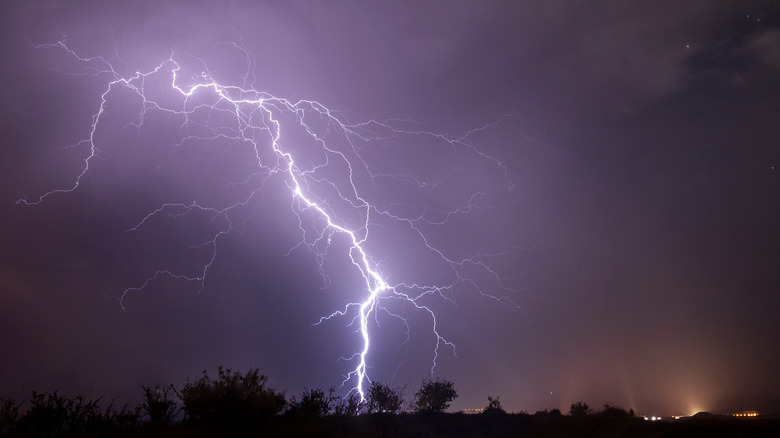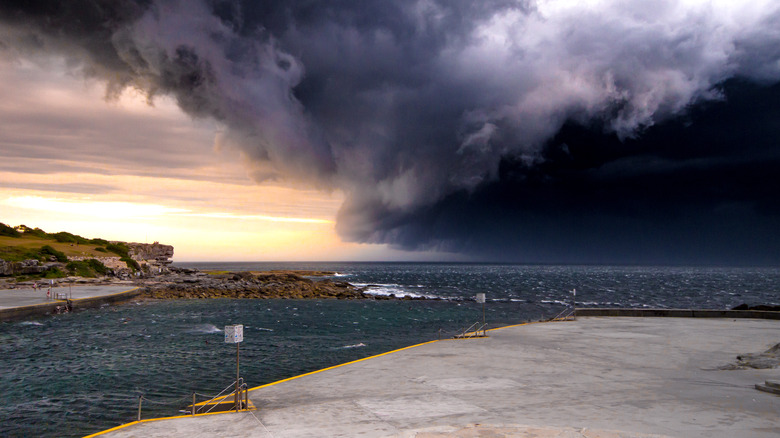What Are The Chances You'll Be Killed By Lightning?
Several people died after being struck by lightning in Lafayette Square near the White House in August 2022, according to the Washington Post. So, how likely is it that a person, let alone four, could be struck by lightning?
Lightning strikes the ground about 40 million times in the United States every year, according to the Centers for Disease Control and Prevention. Lightning is tricky because there is more than one way it can strike. You've probably heard not to stand near a tree during a storm because that increases your odds of being struck by lightning. That's because when lightning strikes a tall object — like a tree — there is a chance that the current will jump from the tree onto a nearby person. But lightning can also travel through the ground after striking a tall object. Lightning can also travel through wires, plumbing, or metal, and if you happen to touch something that has conducted the energy of lightning, it could strike you. Being in an open area increases the odds of being struck by lightning because there are fewer objects for it to strike, according to the National Weather Service (NWS).
That said, the odds of you being struck by lightning are less than one in a million. And, according to the CDC, nearly 90% of people struck by lightning survive. Data compiled by the NWS found that 418 people were killed by lightning strikes in the U.S. from 2006 to 2019.
Death by lightning depends on variables
Certain times of the year and certain activities can increase your risk of being struck by lightning. The National Weather Service reports there are more thunderstorms and lightning strikes in the summer. In fact, 70% of the deaths caused by lightning occurred in June, July, and August, with the most fatalities occurring in July. People spend more time outside in the summer, so it makes sense that lightning strikes (and deaths) are more common then. In the same vein, more people died from lightning strikes on Saturdays. So, what are the odds of it happening to you?
According to the NWS, the odds of being killed by a lightning strike, if you're an average person, in an average location, and practicing average lightning safety protocols, are about 35,000 to 1. However, if you live in Florida, those odds increase to 12,000 to 1 because Florida reports the greatest number of deaths by lightning, per the CDC.
Play it safe to decrease your odds
Because lightning strikes can occur during a thunderstorm without any warning, it's best to practice safety whenever you are in one. In fact, the National Weather Service explains that if you can hear thunder, lightning is close enough to strike you. If you do hear thunder, you should seek shelter, and you should stay there until 30 minutes after you hear the last clap of thunder.
Even when you're indoors, you should be cautious. Since lightning can be conducted through metal and plumbing, you should avoid touching anything that could put you in contact with its current. That includes phones with cords, computers, and other electrical equipment during a storm. You should also avoid bathtubs, showers, concrete floors, doors, windows, porches, and decks. If you must be outside, avoid high areas, stay away from bodies of water, don't seek shelter under rocks, and never lie on the ground (via the NWS).


